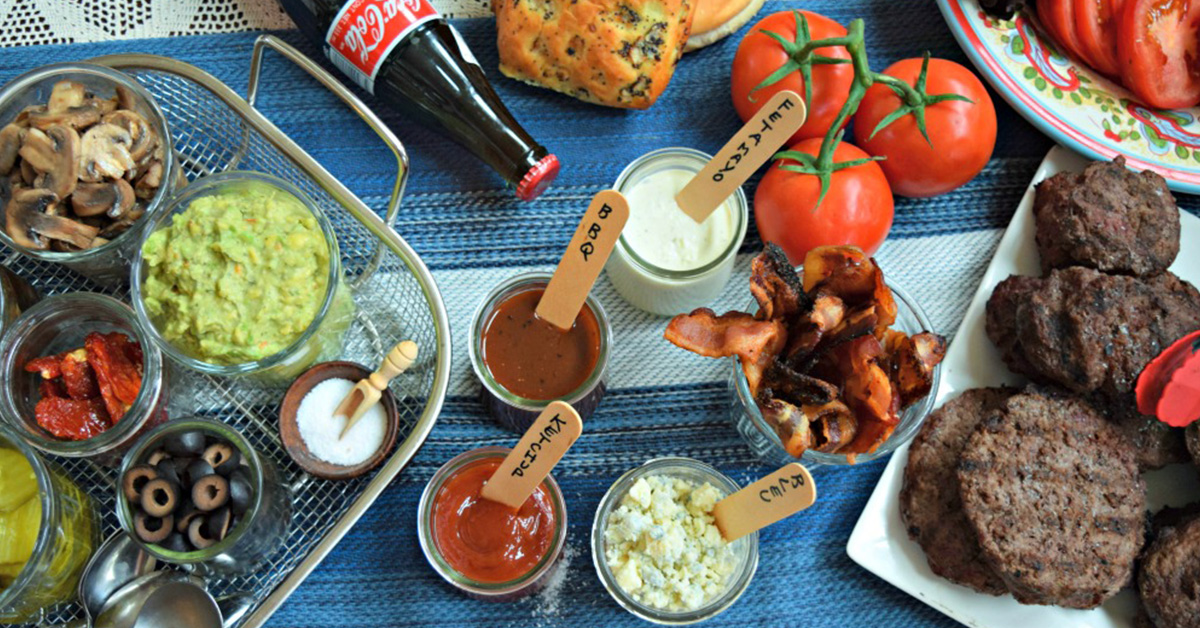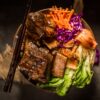Beef Loving Texans Smoking Guide

When it comes to being Texan, some things are just part of our culture. Tailgating, grilling year ’round and smoking are just a few of our favorite things. Since all of these go together, and it being the beginning of football season, we wanted to put together an official smoking guide with our Beef Loving Texans grill master, Jerry McPherson.
Smoking beef can be an art, but it’s a lot easier than you think. You don’t have to be a famous Texas pit master to get the perfect brisket. We’ll break it down by type of smoker, wood tips, recipes and seasonings. You’ll be your own expert in no-time! Watch the video here for a quick introduction.
Water VS. Indirect

Water smoking combines smoke and steam to continually baste the beef, while indirect heat slowly cooks it. Indirect smoking uses lower temperatures and a heat source offset, rather than directly underneath, the beef.
Types Of Smokers

Horizontal smoker with smokestack.
- Horizontal Offset: A long, horizontal chamber with a firebox at one and and an exhaust stack on the other. Some have a vertical cooking compartment used for holding meats, and can cook at a lower temperature.
- Vertical: Has a firebox at the bottom and the food racks above. These usually have doubled internal walls so the heat and smoke travel up and over to circulate around the meat from all sides.
- Water: Water smokers are also vertical smokers. There is a firebox/charcoal pan at the bottom and a water pan above. There are many different types and price ranges on these models.
- Kettle Grill: These are primarily used for grilling, but you can build a fire on one side and place beef on the other so it’s not directly over the heat source. Some brands have a charcoal basket to help keep coals on one side of the kettle.
- Ceramic: Made of heavy ceramic. These hold heat very well and require less lump charcoal. Vented from the bottom and on top to help adjust airflow and temperature. While cooking, always use what’s called “burping” before opening if cooking at temperatures over 300°F. Open the lid a couple of inches to let air flow out slowly to prevent flare ups.
Fueling Your Smoker

Vertical smoker
How you fuel your smoker comes down to what type of smoker and preference. Wood can be used in horizontal, vertical, water smokers and kettle grills. Charcoal and wood chips can also be used in these, but work best for kettle grills. Ceramic smokers only use lump charcoal, but it can be used for all other smokers as well.
Lump charcoal is made by slowly burning pieces of wood until all the natural chemicals, sap and moisture are removed. It leaves very little ash, burns hotter and lights faster than briquettes.
Wood Tips

For smoking, we generally only use hardwoods from nut and fruit bearing trees. Nut woods provide a stronger smoke flavor and fruit woods have a lighter flavor. Hardwoods can be more difficult to start but burn more evenly and longer. Softwoods light and burn easily and quickly with a hot fire, which tends to make a lot of sparks. Here a few popular woods:
- Mesquite: The official smoke wood of Texas. Very strong flavor, and burns hot/fast. Some experts only use when grilling because they believe it has too much flavor on slow smoked beef like brisket.
- Hickory: One of the more popular woods used in barbecue. Strong flavor, so most people combine with another wood. If not monitored, too much smoke can cause beef to have a bitter taste. High heat and easy to burn.
- Oak: Not as strong as hickory, and usually gets paired with hickory. Medium smoky flavor that’s a little stronger than most fruit bearing woods. High heat.
- Pecan: Nutty and sweet. High heat and easy to burn, low smoke.
- Apple: Fruity and sweet, so can be easily paired with oak and sometimes cherry.
- Cherry: Fruity and sweet, so can be easily paired with oak and apple.
Some woods to avoid are cedar, elm and pine.
Seasoning Wood
Fresh cut wood has very high moisture content. Some water must be removed before using it to fuel your smoker. Bad results may occur from burning wood that’s not dried to below 25% moisture content. Too much moisture tends to keep putting out the fire, therefore making it burn poorly!
You can avoid this by drying wood, or “seasoning” it. Firewood is cut then seasoned (dried) in a stack for at least 9 months.
Now that you’re an expert on Texas smoking, give our Smoked Brisket recipe a try!




